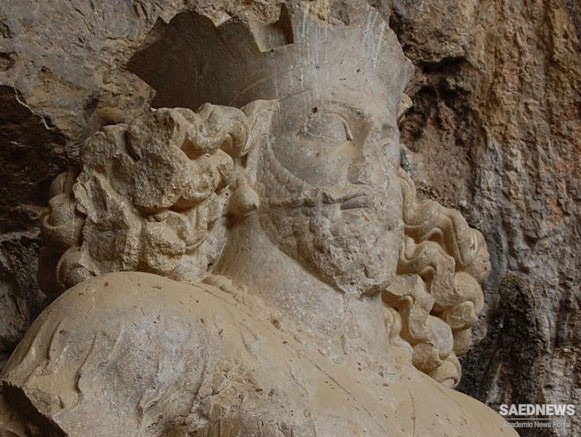One of the historical attractions of Iran that is universally inscribed in recent years is known as the Sassanid Archaeological Landscape of Fars Region or Sassanid Path. Although this site has one name, it includes many invaluable attractions extended in Fars province. One of them is Shapur Cave near Kazeroun that is extremely spectacular.
Many nature trekkers visit the caves and if there is an artwork inside the cave its grace even doubles. An artistic statue was carved inside this cave in time of Sassanid empire that is very beautiful.
Shapur cave is one of the attractions of Kazeroun that is close to the historical city of Bishapur. It is approximately 90 kilometers from Tehran to this destination. Shapur cave is located four kilometers to Bishapur at the end of Tang-e Chogan.
Firstly, you have to visit Kashkuli village and move to the hillside at the end of the driving path. You find the sign of cave in the foothill.
After about one hour and a half walking you will reach a staircase near the cave that facilitates your access to the cave. The height of Shapur cave is about 800 meters from the sea level.
After this hard walking, an about six-meter statue appears in front of you, in the entrance of the cave that was carved artistically. Shapur statue is the tallest sculpture that is remained from Sassanid empire and years before. The entrance of the cave is approximately 30 meters and the statue shines like a jewel.
The head of the statue of Shapur has survived but his two hands have been broken. About 633 AD that Fars province was occupied by Muslims, an Arab commander, Nasr ibn-Sayyar, found the Cave of Shapur.
There were many other artworks inside the cave, too, at that time. Nasr ibn-Sayyar ordered the Shapur statue to be dropped from its place and they did the same with other artworks of the cave, too.
After many years, the army forces returned the statue to the first state in 1336 SH, in time of Pahlavi II. The army, also, established a driving road and a staircase from Shapur river to the entrance of the cave. Now, there is an inscription in the entrance of the cave in which the operation of the statue’s movement has been inscribed. There is another inscription there that is the translation of Shapur inscription in Naqsh-e Rajab.
While walking inside the cave, you will find two water wells; One of them with one-meter depth that was the supplier of the drinking water for people in the past.
The locals believe that Shapur I was buried in this cave. Some others think that when he failed in the battle, he hid in the cave and no one saw him anymore. Whatever the reality, the value of this masterpiece of the sculpture is not reduced.
The greatness and the glory of the statue is more visible in the photos you take next to it because your picture will be much smaller than the statue. The landscape of surrounding mountains and villages is extremely eye-catching from the above. Don’t forget to take comfortable shoes, light food and drinking water for cave trekking.



 Sarvestan Palace the Sleeping Beauty in Fars Province
Sarvestan Palace the Sleeping Beauty in Fars Province














































